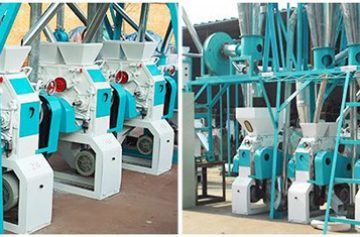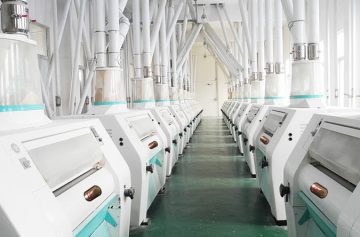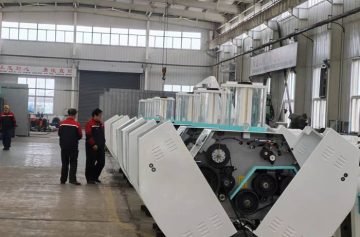As a basic grain ingredient, wheat processing quality is directly related to food safety and consumer health. Flour producers must establish a comprehensive quality control system, standardizing management procedures from raw material handling to equipment maintenance. Furthermore, process optimization should be used to improve product quality and production efficiency.
1. Processing Environment and Process Control
Temperature and Humidity Management
It is recommended that wheat processing be completed in a low-temperature environment to effectively prevent excessive moisture loss. A high-humidity environment should be used during the primary processing stage to maintain the appropriate moisture content of the wheat, laying the foundation for subsequent processes.
Impurity Removal Specifications
Before industrial flour mill machine processing, hard impurities in the raw materials must be thoroughly removed. These impurities not only reduce the yield of the finished product but may also cause abnormal wear on the equipment. A combination of multi-stage screening and magnetic separation is recommended to maintain impurity removal rates within the specified range.
2. Key Points for Equipment Operation and Maintenance
Commercial Wheat Milling Machine System Management
Operators should be familiar with the screen configuration parameters of each system and master the methods for measuring scraping and flour extraction rates. Regularly inspect the wear of the grinding roller teeth. For skin grinding systems, toothed rollers are recommended, while for core grinding systems, smooth rollers are recommended. Adjust the tooth angle parameters based on the material characteristics.
3. Optimizing Grinding Roller Technical Parameters
Tooth Roller Structural Design
The grinding teeth utilize an asymmetrical tooth surface structure, controlling the grinding effect by adjusting the ratio of sharp angle to blunt angle. A small flat surface at the tooth tip prevents excessive material crushing. The tooth surface width should be tailored to the grinding tooth size.
Process Parameter Matching
Select the roller surface based on the material characteristics being processed. For skin grinding, toothed rollers are recommended for enhanced scraping, while for core grinding, smooth rollers are recommended for fine grinding. Regularly calibrate equipment operating parameters to ensure efficient coordination among all systems.
Return to previous page
Key Points for Industrial Grain Flour Mill Machine Optimization
Comments are closed





